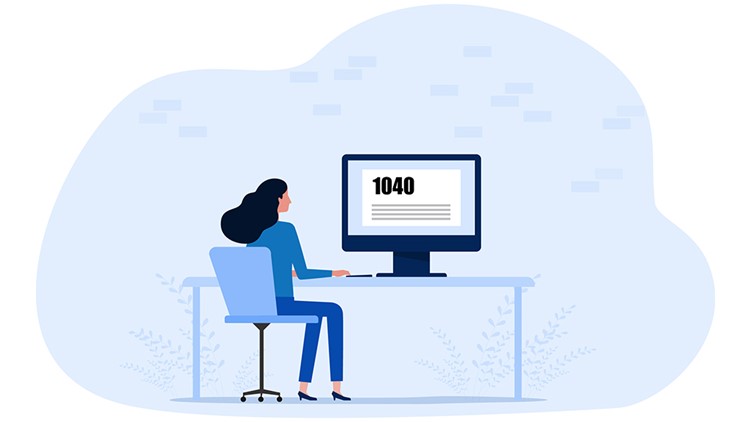by | May 26, 2023 | Tax Tips and News
The Internal Revenue Service is moving ahead with a program that will offer taxpayers a new option for filing their 2023 returns next year. Dubbed “Direct File,” a scaled-down version of the full program will allow taxpayers to file online for free, using an IRS-run website.
The move to online filing through the IRS is rooted in the Inflation Reduction Act (IRA). The IRA mandated that the Treasury Department and the IRS look into whether free online filing is possible through the IRS and what the agency needs to make it happen.
The IRS broke its fact-finding effort into three pieces.
1. Do taxpayers want it?
A number of sources were united to acquire and analyze public opinion about the project. The IRS used its Taxpayer Experience Survey (TES) to poll thousands of taxpayers on the issue. Next, results from an independent MITRE Corporation survey were pulled in. Then, independent analysis by New America and Professor Ariel Jurow Kleiman on the concept was added to the mix.
An IRS report to Congress on the Direct File initiative determined taxpayer interest in the project is sufficient to move forward.
2. Are there costs to implementing Direct File?
While the IRS report doesn’t give hard figures, it does caution Congress that building and executing an effective Direct File online filing site would require a sustained investment by lawmakers. Given the difficulty the agency has faced in receiving requested funding, this could prove to be a roadblock for the future of the program.
3. Is a free online filing portal even possible for the IRS?
The congressional report says creating a successful online filing portal is feasible despite presenting technical challenges for operation and administration. According to the report, the agency is ready and able to meet these challenges.
The IRS is embracing a proven method of testing for its new project: start small and work your way up. To that end, the agency intends to field its Direct File pilot program in 2024 with a limited scope so technicians can more easily track its operation. This approach will also allow system administrators to see if the pilot project adequately meets the customer support and technology needs of taxpayers before the system is scaled up.
In the short term, the IRS plans to meet with stakeholders in the tax industry over the coming months to hear concerns and offer some answers. According to the agency, more details on the Direct File program will soon be available.
Source: IRS submits Direct File report to Congress; Treasury Department directs pilot to evaluate key issues
– Story provided by TaxingSubjects.com
by | May 6, 2023 | Tax Tips and News
The Internal Revenue Service says it has almost $1.5 billion in leftover tax refunds for 2019 taxpayers who haven’t filed—but the time remaining to claim this money is slipping away.
According to the agency, as many as 1.5 million taxpayers could benefit from the unclaimed refunds, but they must file a tax year 2019 return to get it. The median refund is calculated to be $893.

Expanded three-year filing window is about to close
Taxpayers usually have three years in which to file and claim a refund. After that point, the money goes into the government’s pocket. Because of the COVID-19 pandemic, the usual deadline for filing 2019 returns for refund was pushed back to July 17, 2023. Notice 2023-21 has more details.
The IRS has broken down the list of refunds on a state-by-state basis, providing some insight into which parts of the US still need to file tax year 2019 returns:
- Texas leads the list in terms of total potential refunds. Lone Star State taxpayers could pick up more than $142 million if they file.
- California has the highest estimated number of taxpayers who need to file to get it: 144,700.
- New Hampshire, with roughly 6,900 affected taxpayers, has the highest median refund in the group: $974.
- Vermont brings up the rear with just 3,100 estimated taxpayers who could benefit, with estimated refunds totaling just over $3 million.
Things to consider before filing
It’s worth noting that filing could have benefits beyond just the outstanding tax refund. A number of low- and moderate-income filers may be eligible for the Earned Income Tax Credit or EITC. In 2019, the EITC was worth as much as $6,557 to qualified taxpayers.
Despite four years passing, there are still options available for tracking down the various documents needed to file. Forms W-2, 1098, 1099, and 5498 may be available through the taxpayers’ employer, bank or other institution. The Get Transcript Online tool on IRS.gov can help taxpayer quickly track down forms that might be unavailable from other sources.
Taxpayers who need to file a paper Form 4506-T can request a “wage and income transcript” showing data from their W-2, 1099, 1098, and other financial forms. Keep in mind, though, this option is by far the slowest, taking weeks for the IRS to send the results.
As with all refunds, it’s worth remembering that the amount the taxpayer actually gets may be smaller than expected, depending on the circumstances. This decrease in expected refund is often due to 2019 tax refunds being held back to pay tax owed if a taxpayer hasn’t filed for 2020 and 2021. Additionally, a tax refund could be used to pay any tax debt owed to the IRS or state tax agency or offset unpaid child support and past-due student loan debt.
Source: IR-2023-79
– Story provided by TaxingSubjects.com



